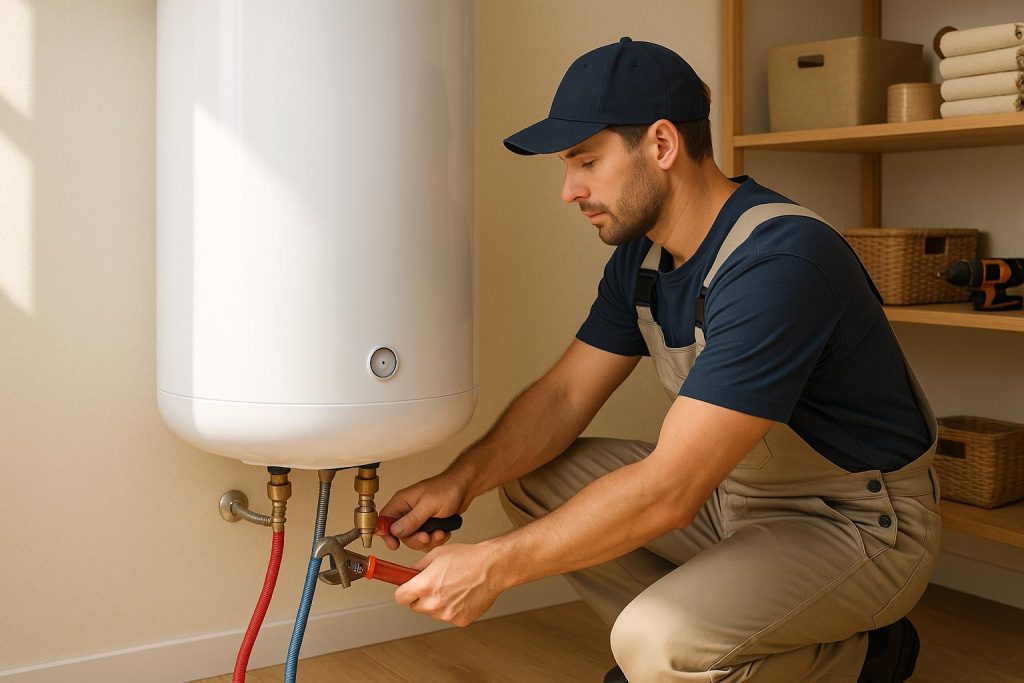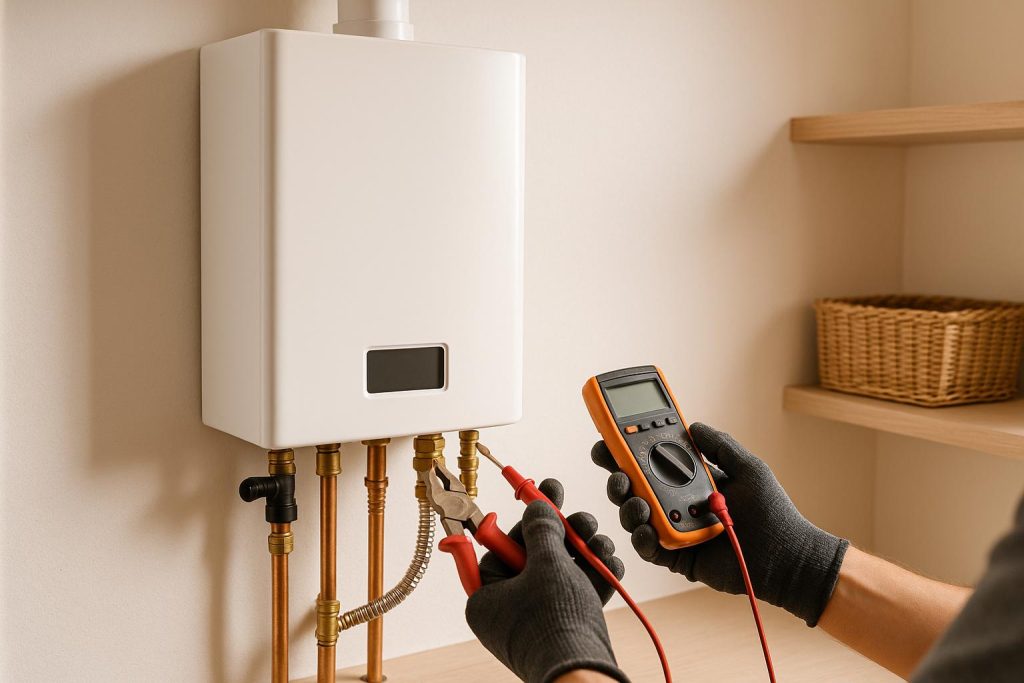
A continuously running toilet is a common plumbing problem that can waste a significant amount of water and money if left unresolved. Here’s a brief summary of why your toilet may keep running and how to fix it:
Causes of a Running Toilet
- Flapper Chain Issues: The most common cause is a malfunctioning flapper or flapper chain inside the tank. If the flapper doesn’t seal properly or the chain is tangled or too long, water can continuously flow into the bowl.
- Faulty Float: A damaged or improperly adjusted float can lead to an excessive water level in the tank, causing continuous running.
- Mineral Buildup: Over time, mineral deposits can accumulate in the fill valve, preventing it from shutting off correctly.
- Leaking Flush Valve: A damaged or worn flush valve can also allow water to leak into the bowl, leading to continuous running.
How to Fix a Running Toilet
- Check the Flapper: Inspect the flapper for damage or misalignment. Ensure it seals properly after each flush. Adjust or replace it if necessary.
- Examine the Chain: Make sure the flapper chain is properly connected and has some slack but isn’t too long. It should allow the flapper to seal tightly when the toilet is not in use.
- Inspect the Float: Check the float for damage and ensure it’s properly adjusted to control the water level in the tank. If it’s damaged or not working correctly, consider replacing it.
- Clean the Fill Valve: If you suspect mineral buildup in the fill valve, remove it and clean it thoroughly. Vinegar can help dissolve mineral deposits.
- Replace the Flush Valve: If the flush valve is leaking and cannot be repaired, consider replacing it with a new one.
- Call a Professional: If you’re unsure about any of these steps or if the problem persists after attempting fixes, it’s best to consult a professional plumber for a thorough inspection and repair.
Troubleshooting a Toilet That Keeps on Running
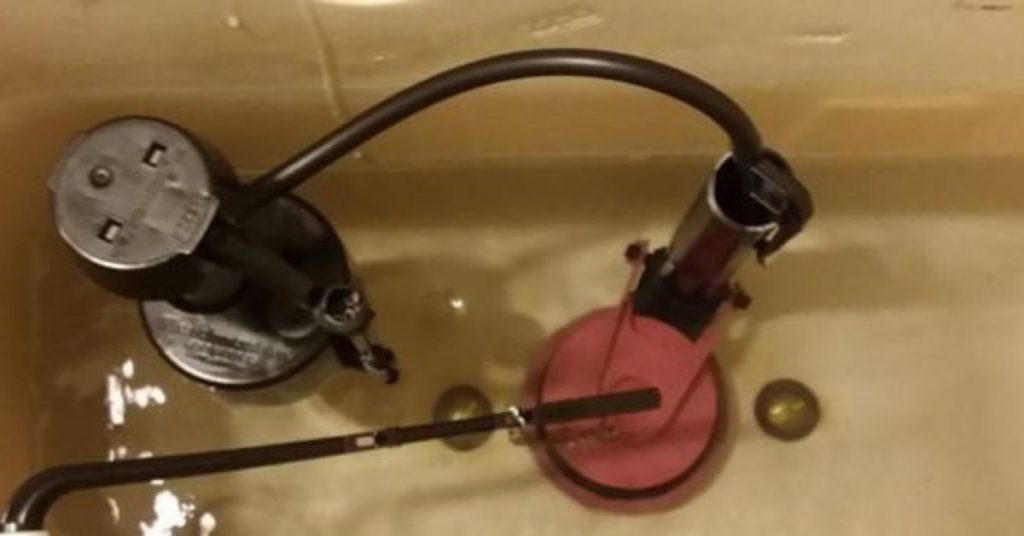
As we can see from the above explanation, a constantly running toilet can be caused by a several things inside the toilet tank. But how do you know, which toilet tank part is faulty?
The first thing you should do is to remove the toilet tank. Lift it slowly and keep it safely somewhere it cannot fall off and crack.
With the lid out, check the level of water inside the tank. You can draw 2 conclusions from the water level in the tank.
- If the level of water inside the toilet tank is so high that it is flowing down to the bowl through the overflow tube, you most likely have a faulty fill valve that is not shutting off. It could also mean that the toilet float is not set at the right height therefore keeping the fill valve open.
- If the water level is below the overflow tube, you do not have a problem with the fill valve or float. The most likely cause of the running toilet is a bad toilet flapper.
With a bad toilet flapper, you are also likely to experience a phenomenon known as ghost flushing. Ghost flushing does not mean that there are ghosts flushing your toilet but it is where the toilet automatically flushes itself even in the dead of the night.
As I said, the toilet tank is designed to always auto refill itself with water. If the flapper is leaking, the water level in the tank will drop to below the critical level and when that happens the toilet float will trigger the fill valve to open and start filling the tank.
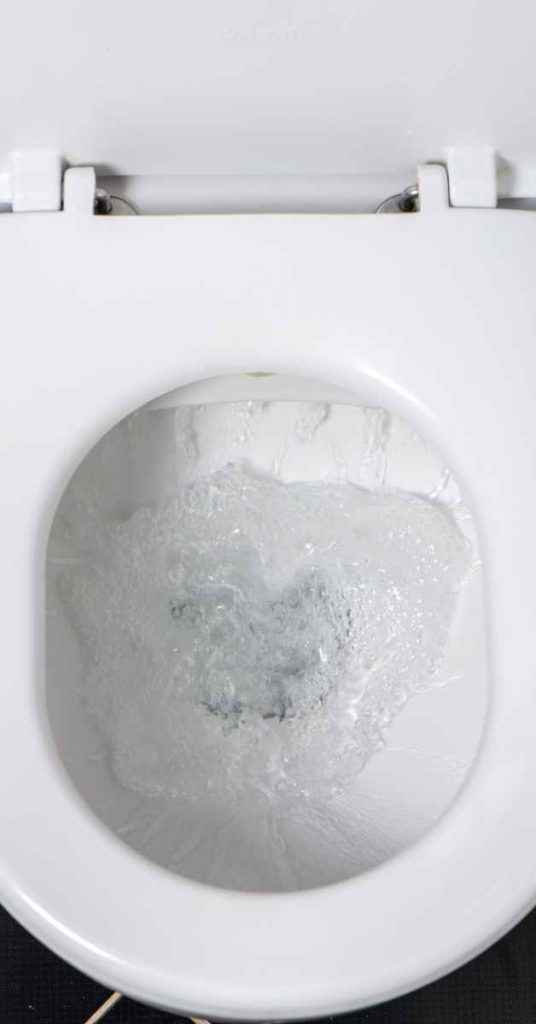
After narrowing down the causes of the running toilet, you can now go ahead and fix the problem. The good thing is that fixing a running toilet is very easy and you will not need to hire a plumber.
The replacement parts are also very cheap. You can decide to buy the parts from the original toilet manufacturer or just buy universal toilet tank parts.
If you need to buy a universal toilet tank repair kit I would recommend going with either Fluidmaster or Korky. Their quality is as good as that of the original parts.
Since some people have dual flush toilets, I will also look at how to fix running dual flush toilets a little later on in this post.
The first thing you need to do when fixing a running toilet is to turn off water to the toilet. Look for a shut off valve on the wall behind the toilet.
Turn the valve all the way clockwise and if you have a push/pull shut off valve pull it out. Flush the toilet and hold the handle down to remove as much water as possible from the tank.
Let us now look at the different ways of fixing a toilet that keeps running.
1. Replace the Toilet Flapper
A toilet flapper is rubber seal at the bottom of the toilet tank. It is connected to the toilet handle using a lift chain.
When you pull down the handle, the chain picks up tension and lifts the flapper off the flush valve opening. This allows water to flow down to the bowl for flushing.
A toilet flapper should therefore create a watertight seal around the flush valve opening.
After years of usage, the rubber used to make the toilet flapper hardens and cracks or even warps. Water quality also affects the longevity of toilet flappers.

A warped toilet flapper will not seal properly and will instead allow water to seep from underneath it to the bowl and hence a toilet that won’t stop running.
If you live in area with hard water or if there is a lot of debris in your water, the same can collect underneath the toilet flapper and prevent it from sealing properly.
You therefore don’t need to replace the flapper all the time. Sometimes cleaning it will be enough to stop the running toilet.
Even before replacing the toilet flapper, check the condition of the flapper chain. Is it too tight or hooking against anything inside the toilet tank?
A tight lift chain will unseat the toilet flapper from the flush valve opening (even if so slightly) and you will end up with a toilet that keeps running.
When the toilet handle is not being pulled down, the flapper lift chain should have a slack of about a ¼ to ½ inch.
If you think that a tight flapper chain is the problem then go ahead and adjust it. Remember that a loose flapper chain will also fail to lift the flapper completely off the flush valve opening during flushing and you will end up with a toilet that won’t flush all the way.
If the flapper lift chain looks good, the flapper could be the problem. This is how to replace it:
- Unhook the lift chain from the flush handle arm and drop it inside the tank. A new flapper will come with a new chain.
- The flapper is usually connected to the flush valve on both sides. Unhook its ears from the flush valve pegs.
- Lift the flapper from the tank.
- Keenly inspect the status of the old flapper. Is it worn out, warped or is there mineral buildup/debris underneath it?
- If there is a heavy buildup of debris but the flapper looks to be in good condition, clean it in a nearby sink to remove all the debris.
- Don’t forget to clean the bottom of the tank as well where the flapper sits.
- Install it back and turn on the water to the tank.
- To check if the leaking has stopped, drop some food color or dye inside the tank and don’t flush the toilet for about 30 minutes.
- If the color appears in the bowl, the flapper is leaking and will need to be replaced but if it doesn’t your problem is fixed.
- A worn out or warped toilet flapper will need to be replaced. Remember to buy the right size of flapper.
2. Adjust the Toilet Float

If the level of water inside the toilet tank is so high that it overflows down to the bowl vial the overflow tube, adjusting the toilet float could be the solution.
If you have an old toilet, you will have what is called a float ball or a ballcock. A float ball is usually connected to the fill valve using float arm.
In modern toilets, floats are connected to the vertical body of the fill valve and are relatively smaller in size compared to ballcocks.
The function of the toilet float is to open and close the fill valve. When the toilet is flushed, the float moves to the bottom of the tank and opens the fill valve. The tank starts to refill.
As the tank is refilling, the float moves up until its set height where it stops and shuts off the fill valve. If the float is not properly set, it will keep moving up and keep the fill valve open resulting in a toilet that keeps running.
You will only need a Philips screwdriver to adjust the level of water inside the toilet tank.
If you have a float ball in your tank, look for where the float arm is connected to the fill valve. You will see a Philips screw.
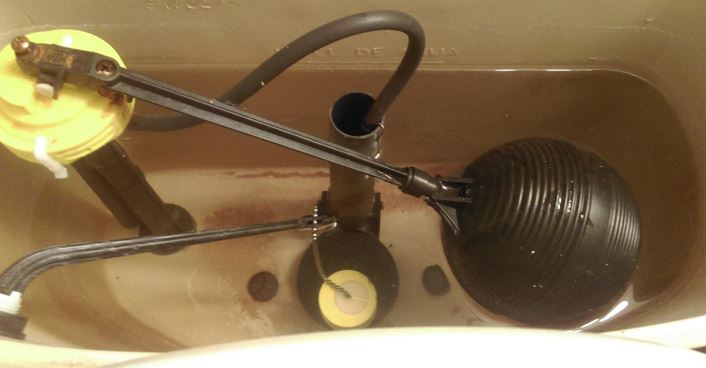
- Turn on water to the toilet.
- Use the screwdriver to turn the screw counterclockwise or to loosen the screw which will lower the ball allowing the fill valve to shut off.
- Keep turning the screwdriver until the water level is just about ½ inch below the overflow tube. Some toilets also have a water line mark so look out for one in yours.
If you have a modern toilet with a float cup, look for a plastic rod (looks like a big plastic screw) on the side of the float.
Turn the rod with your hand or screwdriver counterclockwise to lower the float until the fill valve shuts off when the water level is just about ½ inch below the overflow tube.
3. Replace the Fill Valve

A toilet fill valve is the part connected to the water supply line underneath the toilet tank as well as the float inside the tank. Its function is to fill the tank with water after every flush.
When the toilet fill valve is faulty, it keeps filling the tank with water, meaning it does not shut off. As a result, the excess water flows to the bowl via the overflow tube resulting in a toilet that keeps running
Replacing a toilet fill valve is easy and will fix the problem. Here is how to do it:
- Turn off water to the toilet.
- Flush the toilet and hold the lever down to remove as much water as possible.
- Use a sponge to soak the water still the left inside the tank
- Disconnect the water supply line from the tank. Have a small contained to drain the water in the line. Always try to disconnect the coupling using your hand before reaching out for a wrench.
- With the line out, disconnect the fill valve mounting nut from underneath the tank.
- Unhook the refill tube from the overflow tube and pull out the old fill valve.
- Adjust the height of the new fill valve. Ideally, the top cap of the fill valve should be 3 inches about the overflow tube. Place it in the fill valve opening at the bottom of the tank and if the height is not good lift it off and hold the top part as you unscrew the bottom shank till you get the properly length.
- Insert the fill valve in the opening and secure it using the mounting nut under the tank.
- Connect the water supply line to the fill valve.
- Clip the refill tube on the overflow tube.
- Test the new fill valve.
- Adjust the float if necessary.
4. Adjust the Refill Tube Length
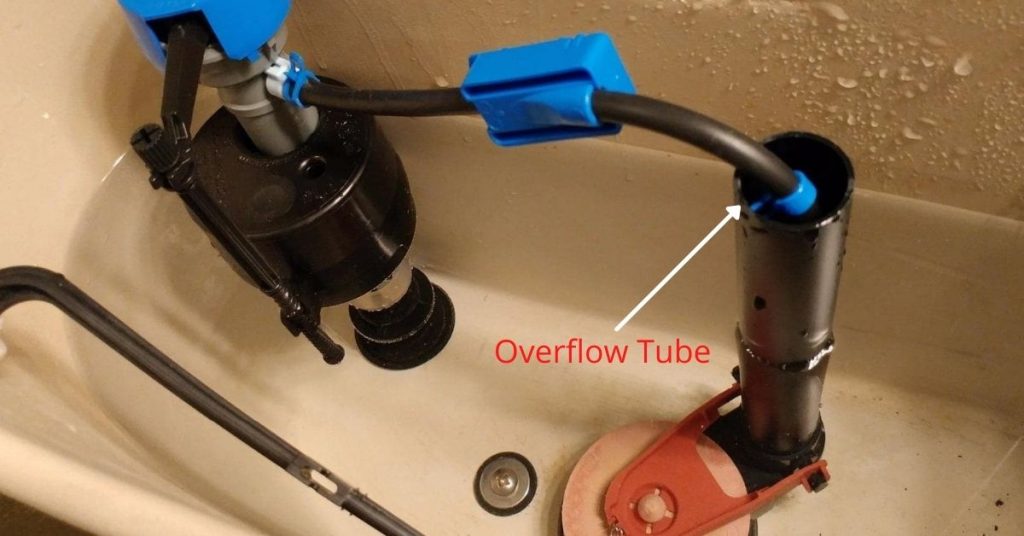
A refill tube is the thin tube which connected from the fill valve to the overflow tube. After flushing the toilet and as the tank is refilling, the fill valve send some water back to the bowl via the refill tube.
That is the water you see at the bottom of the toilet bowl.
If the refill tube is too deep inside the overflow tube, a suction effect will be created and it will siphon water from the toilet tank. Since the tank should have a certain amount of water at all times, the fill valve will keep filling it and the refill tube siphoning it out.
The solution here is very easy. Remove the refill tube from the overflow tube and cut it so that it just about an inch inside the tube.
Dual Flush Toilet Keeps Running After a Flush? How to Fix It
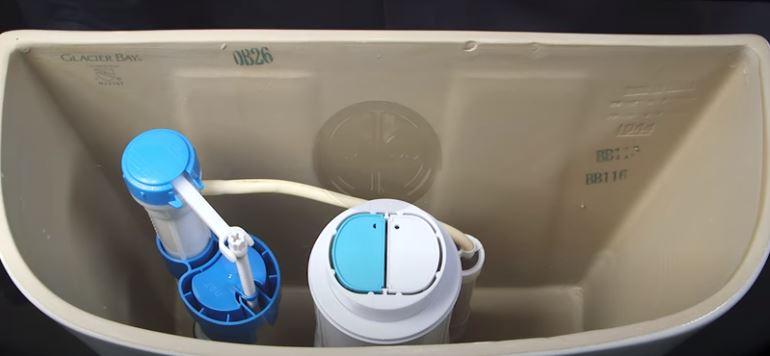
Dual flush toilets do not have a flush handle and a toilet flapper but instead use flush buttons to flush the toilet.
In the middle of the toilet tank is a flush valve assembly with the 2 buttons. The flush valve is mounted on top of the flush valve opening and a flush valve seal is used to create a watertight seal.
If the flush valve seal is worn out, warped or even dirty, it will not seal properly and you will end up with a toilet that keeps running after being flushed.
Here is how to fix it:
- Turn off water to the toilet and flush the toilet.
- Remove the tank lid
- Grab the flush valve assembly and turn it 1/8 turn counterclockwise then lift it off.
- Remove the flush valve seal from the bottom of the assembly.
- Check if it is dirty, worn out or warped.
- In most cases, all you need to do is clean the seal and put it back in the groove the other way round. It will seal properly even if it is warped.
- A torn/worn out seal will however need to be replaced.
- To install the flush valve assembly, put it back in its position and turn it 1/8 turn clockwise.
- Turn on the water and repeat the leaking test.
And basically that is how to fix a toilet that keeps running. If all of this is too much for you, you can always contact a professional plumber. A plumber will however charge you a lot but their work is of high quality.


